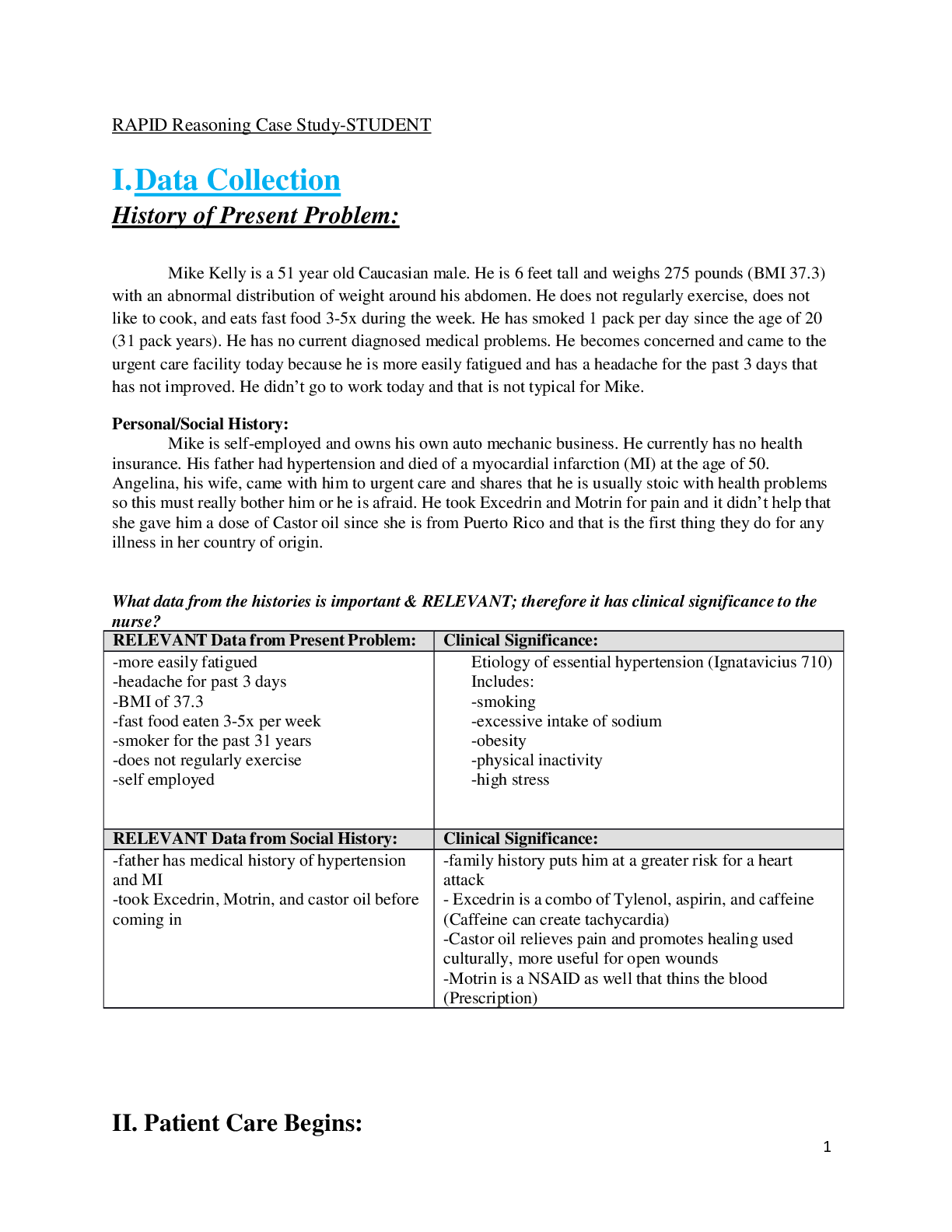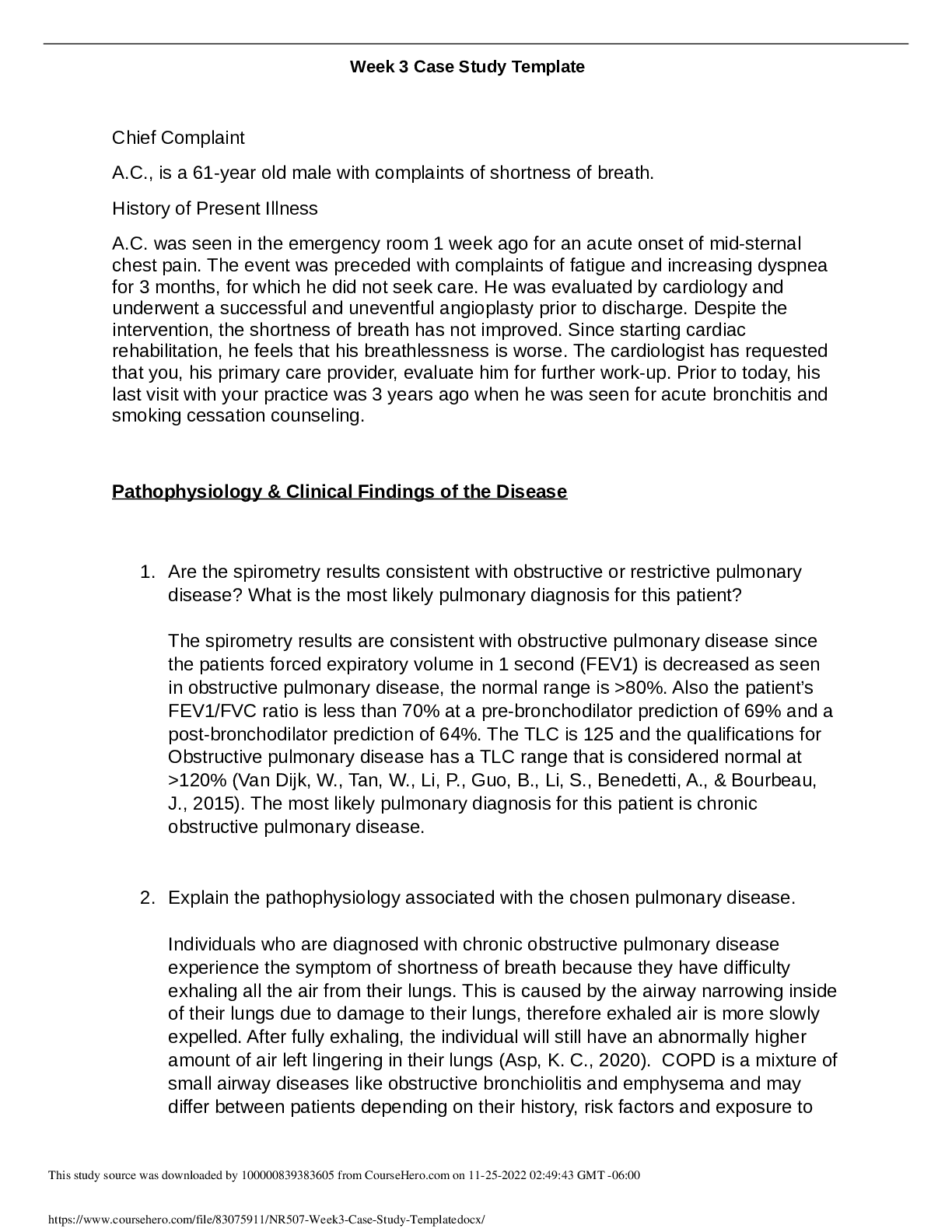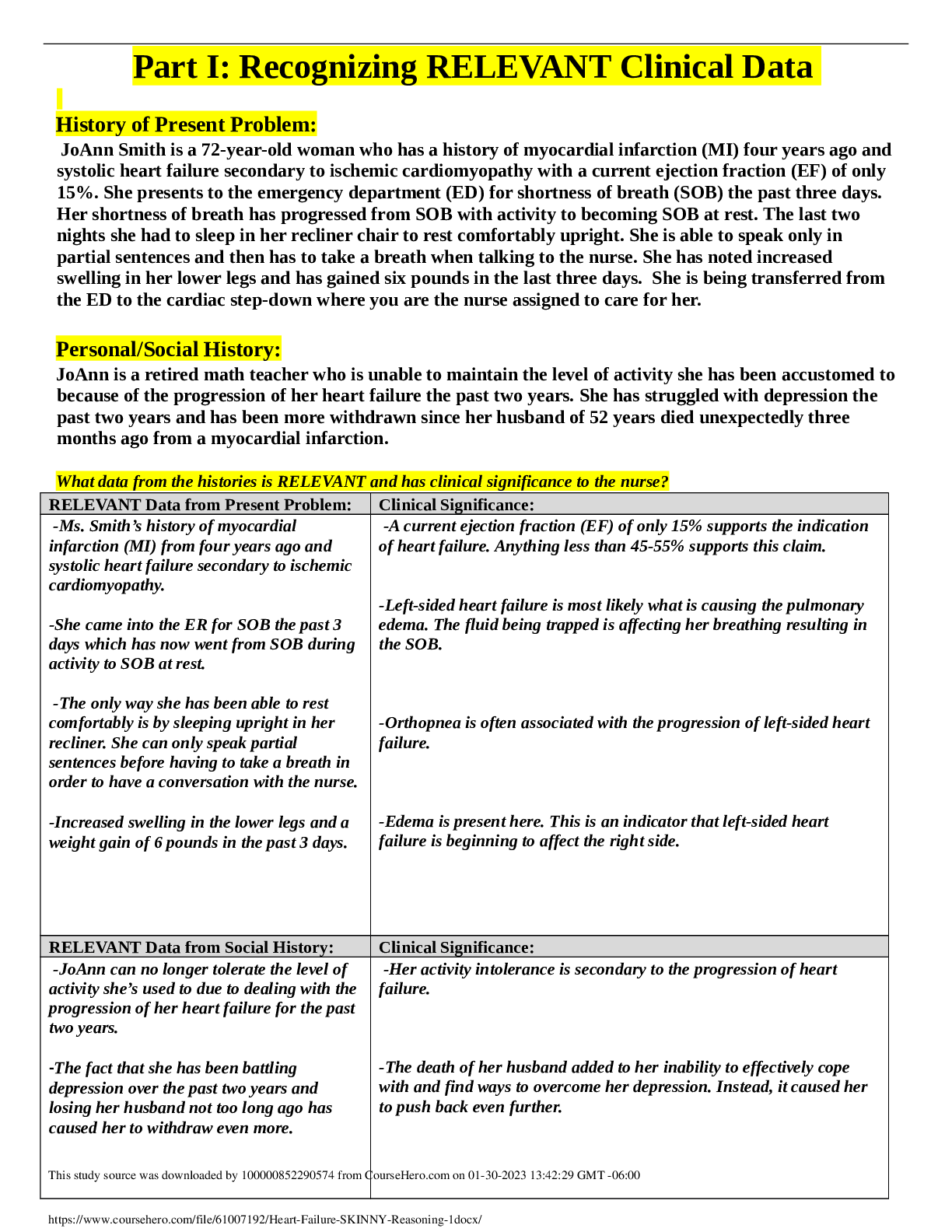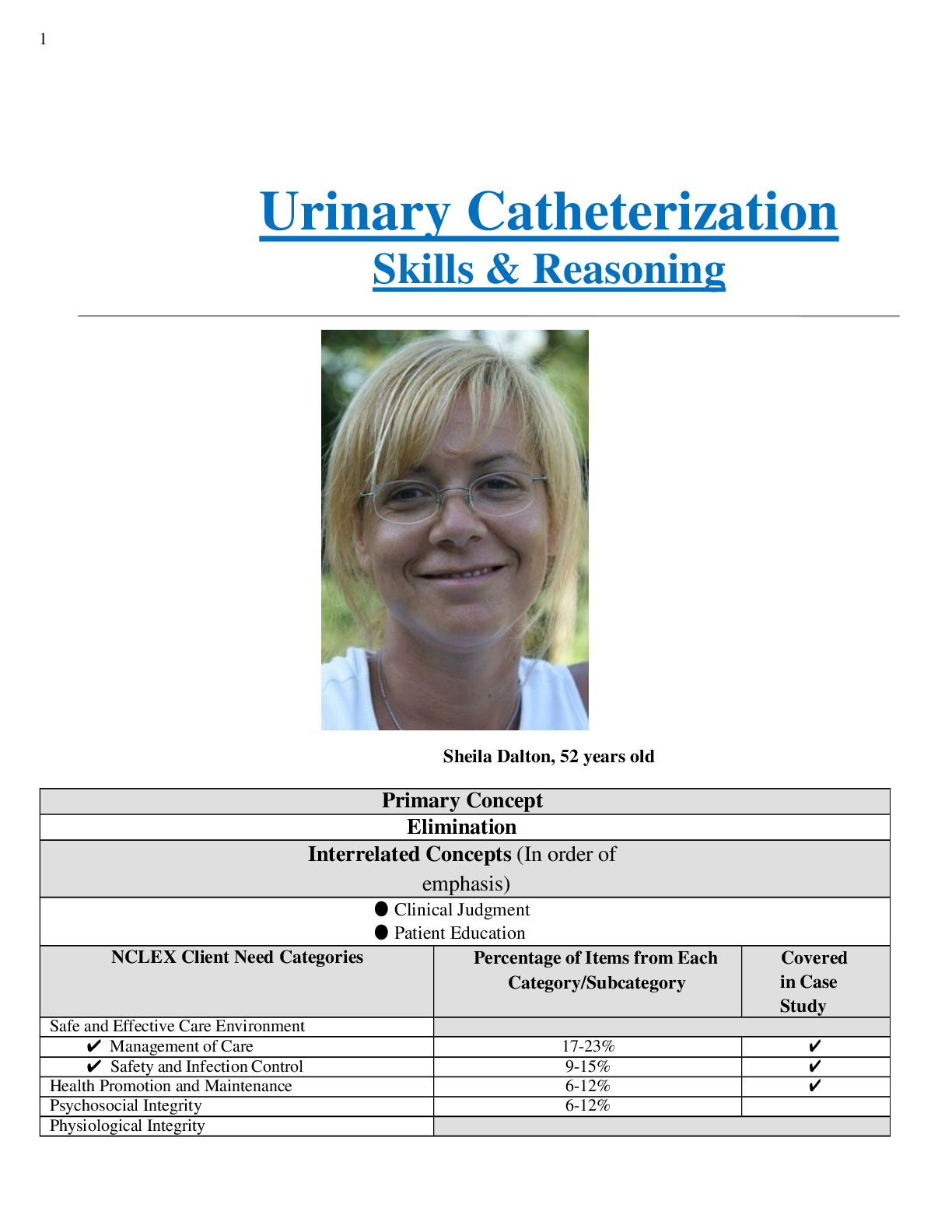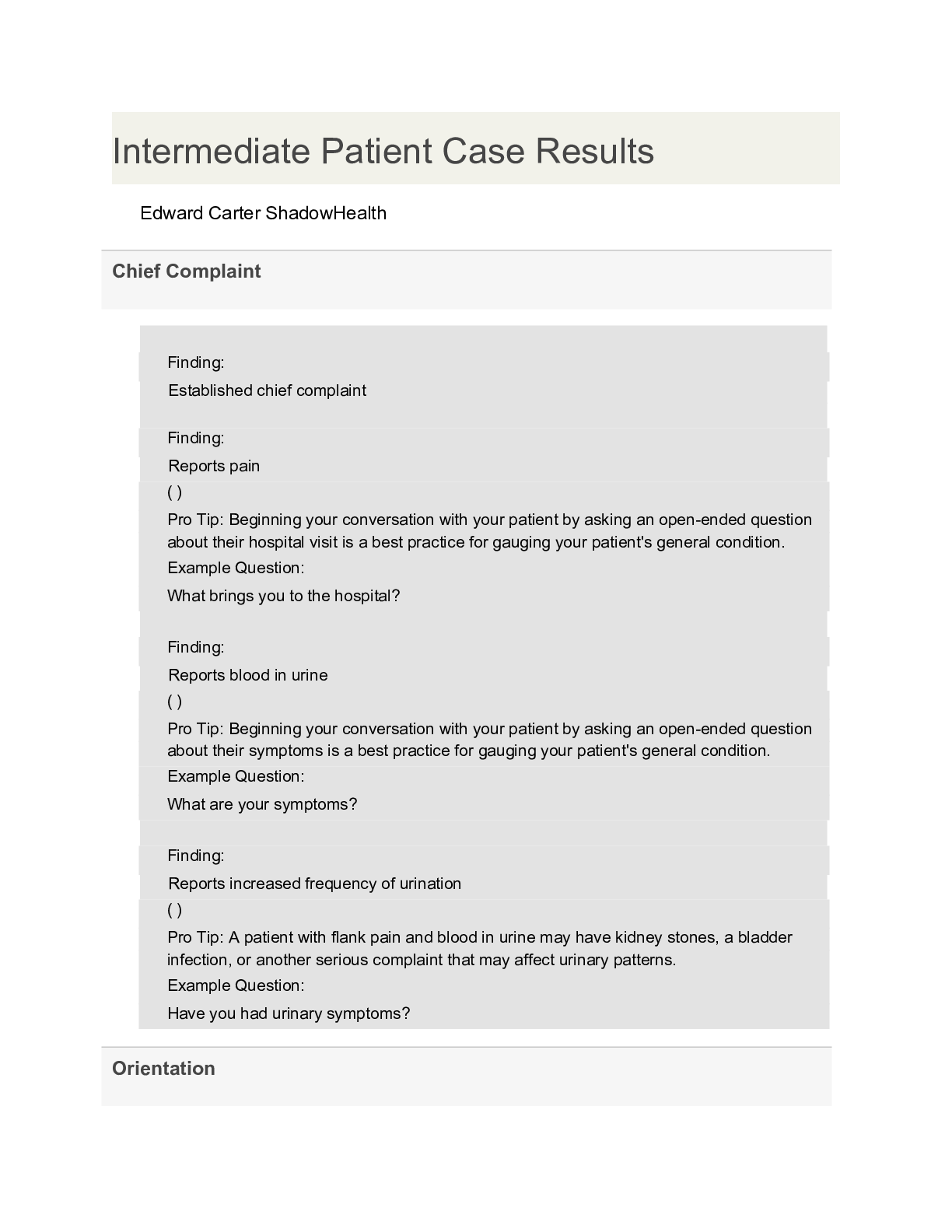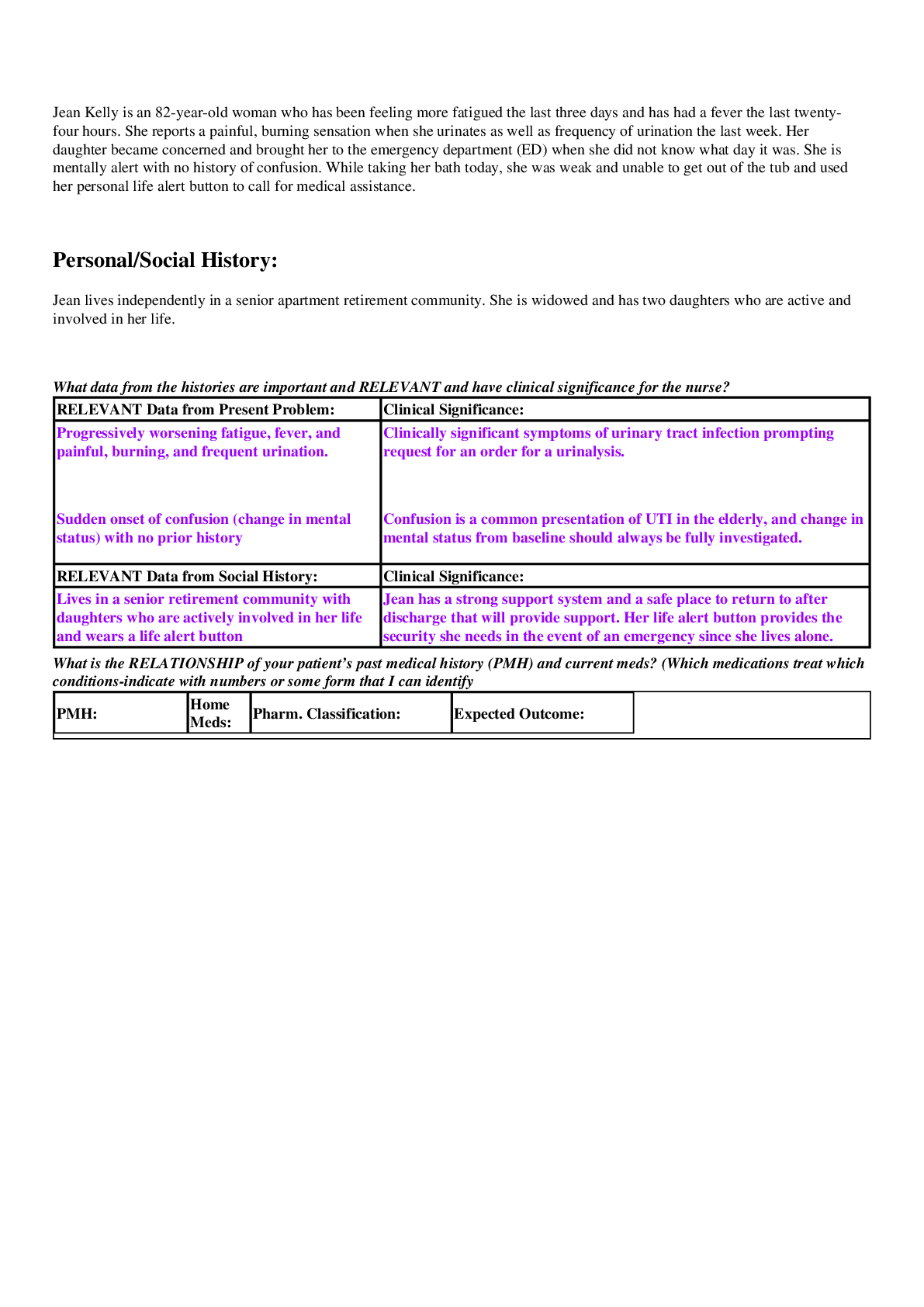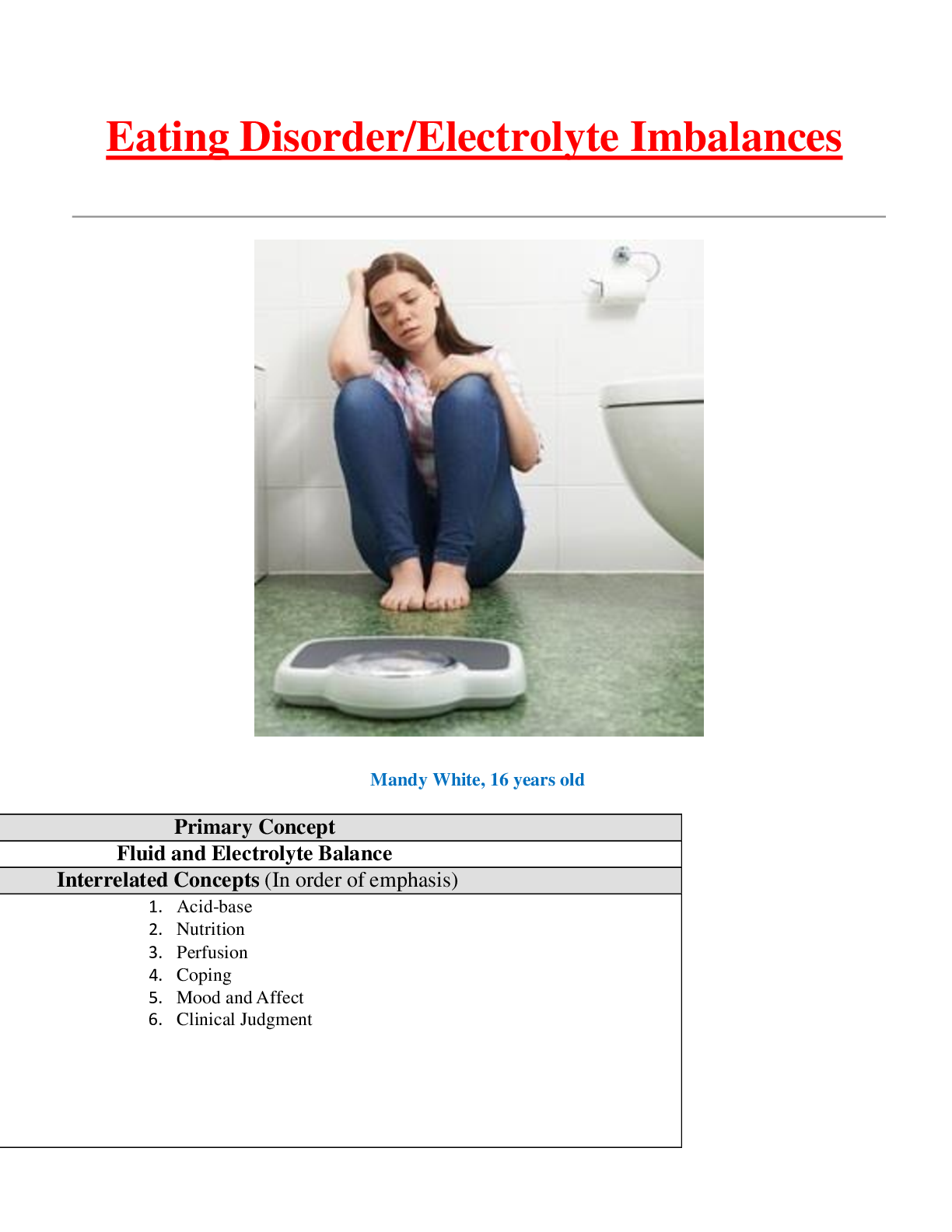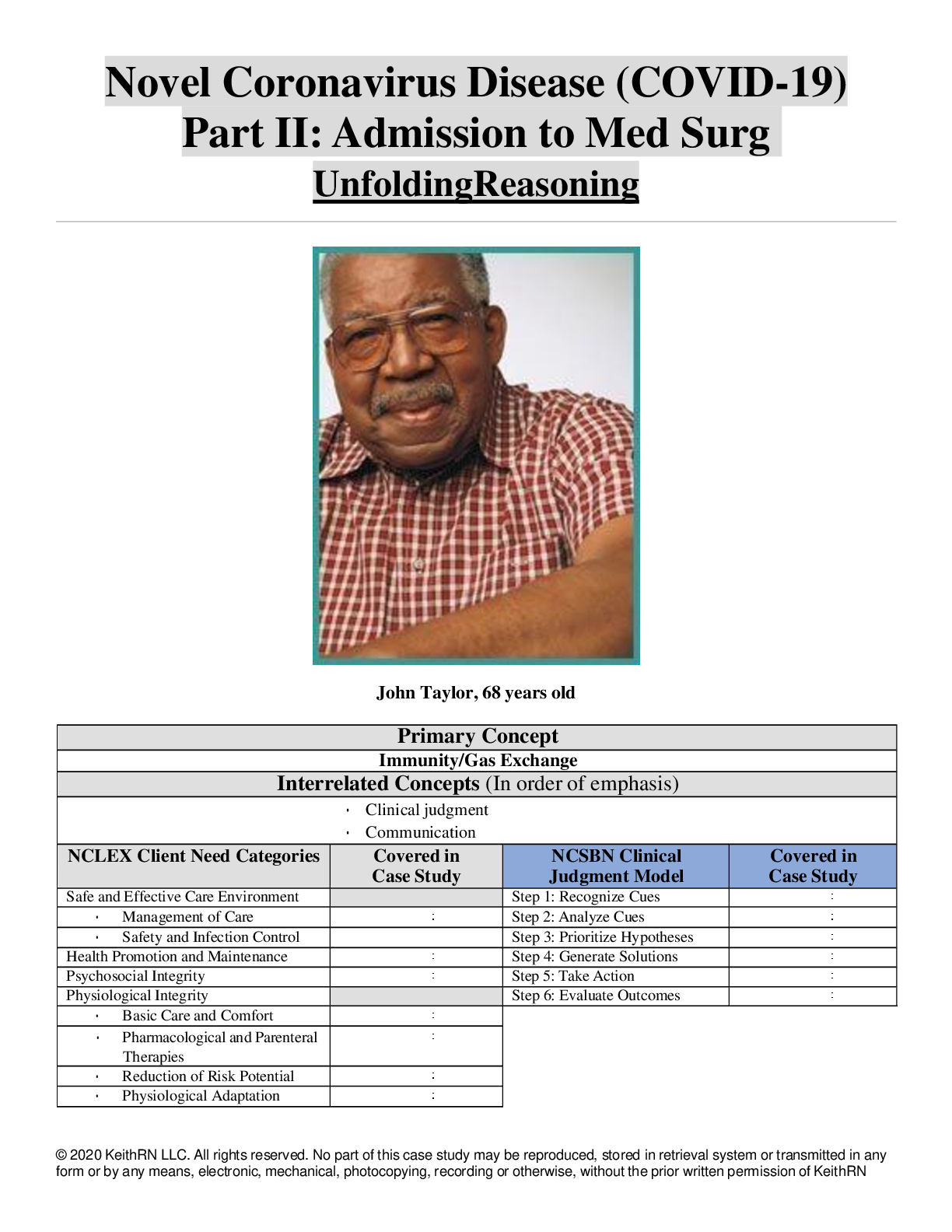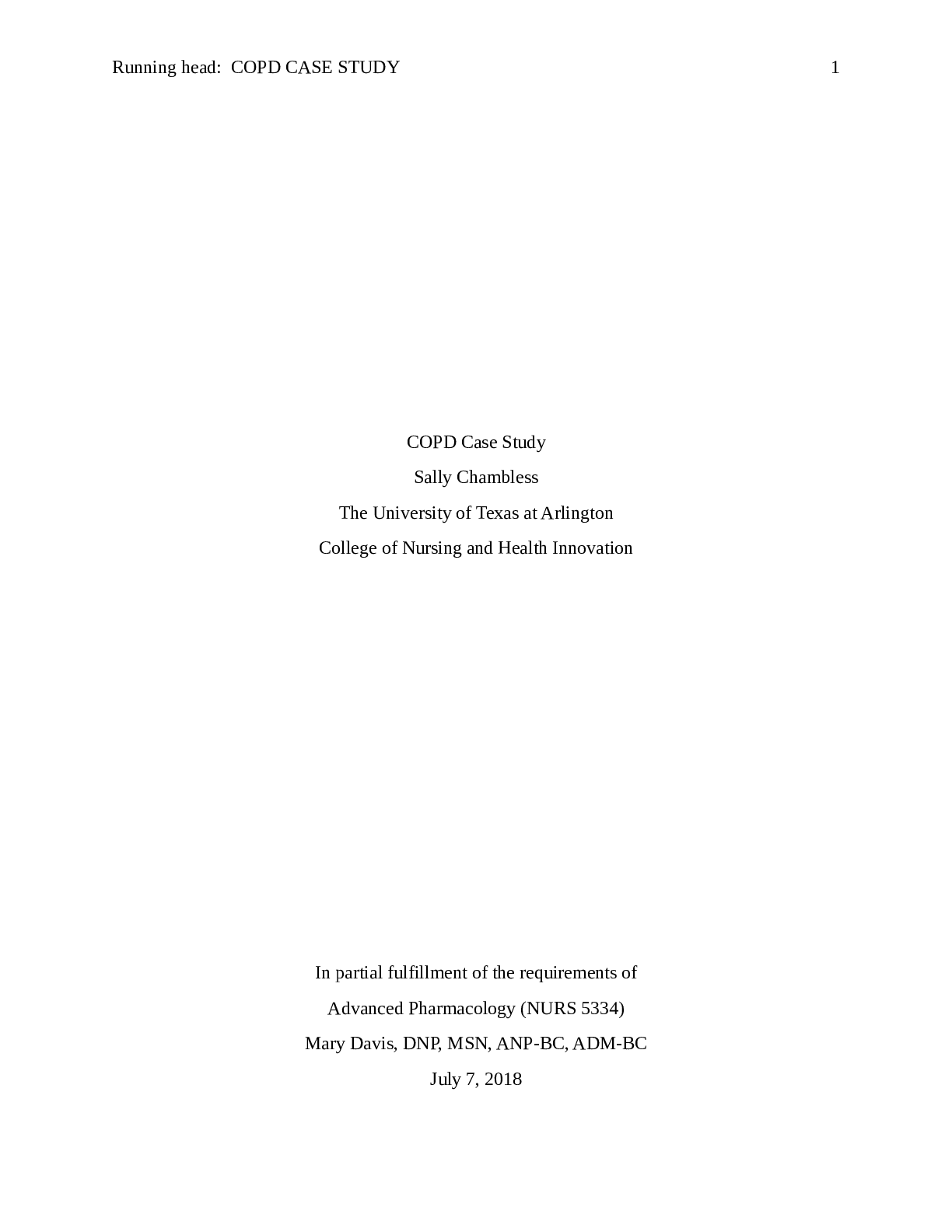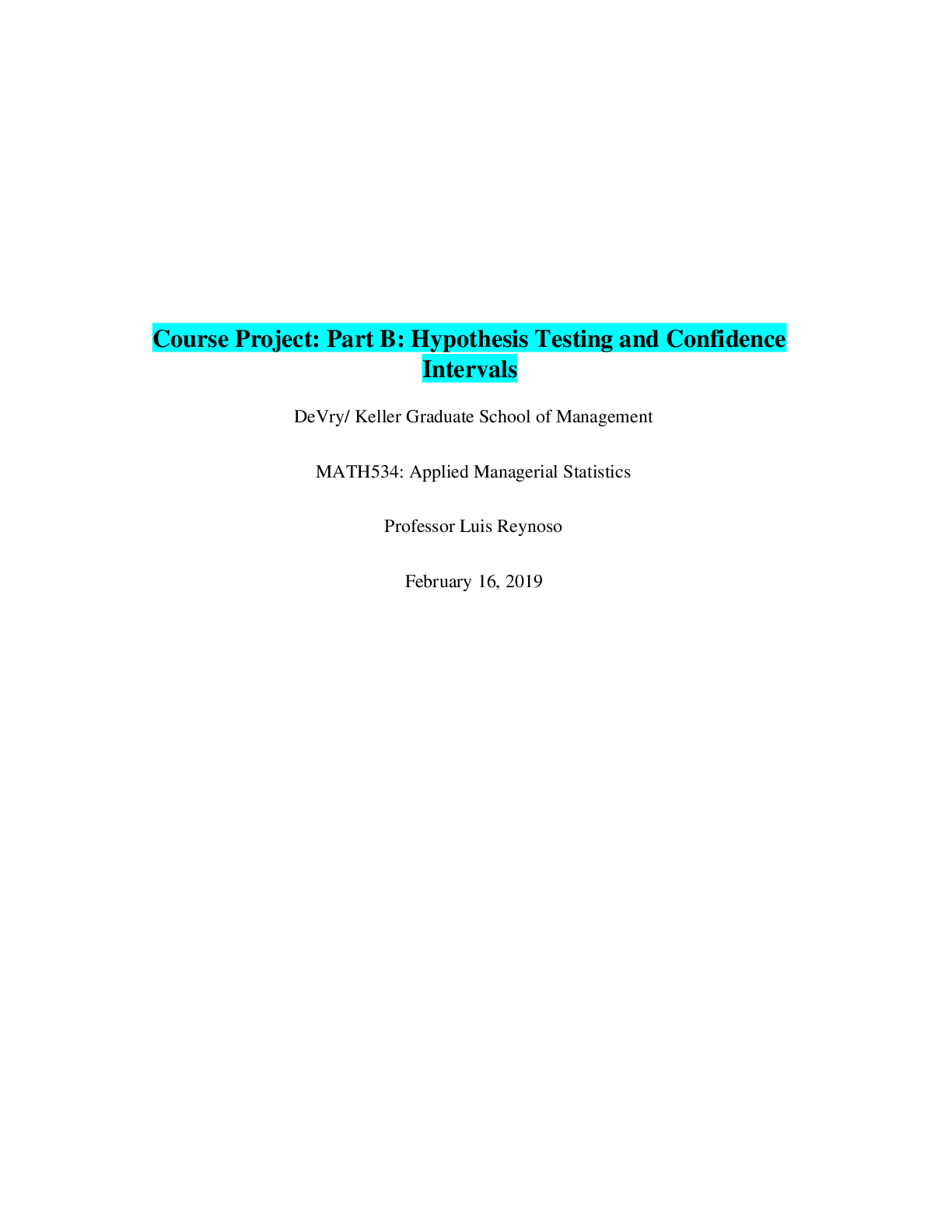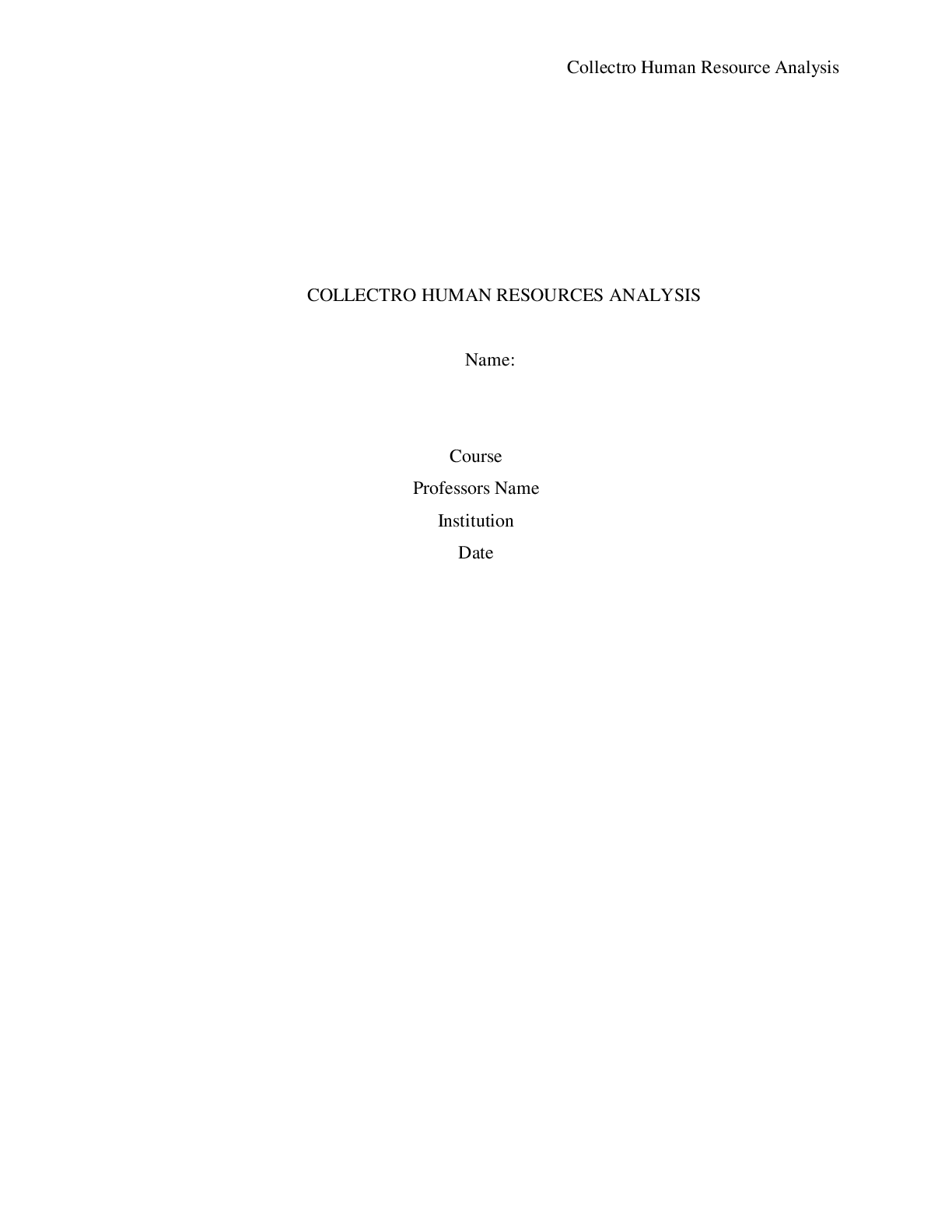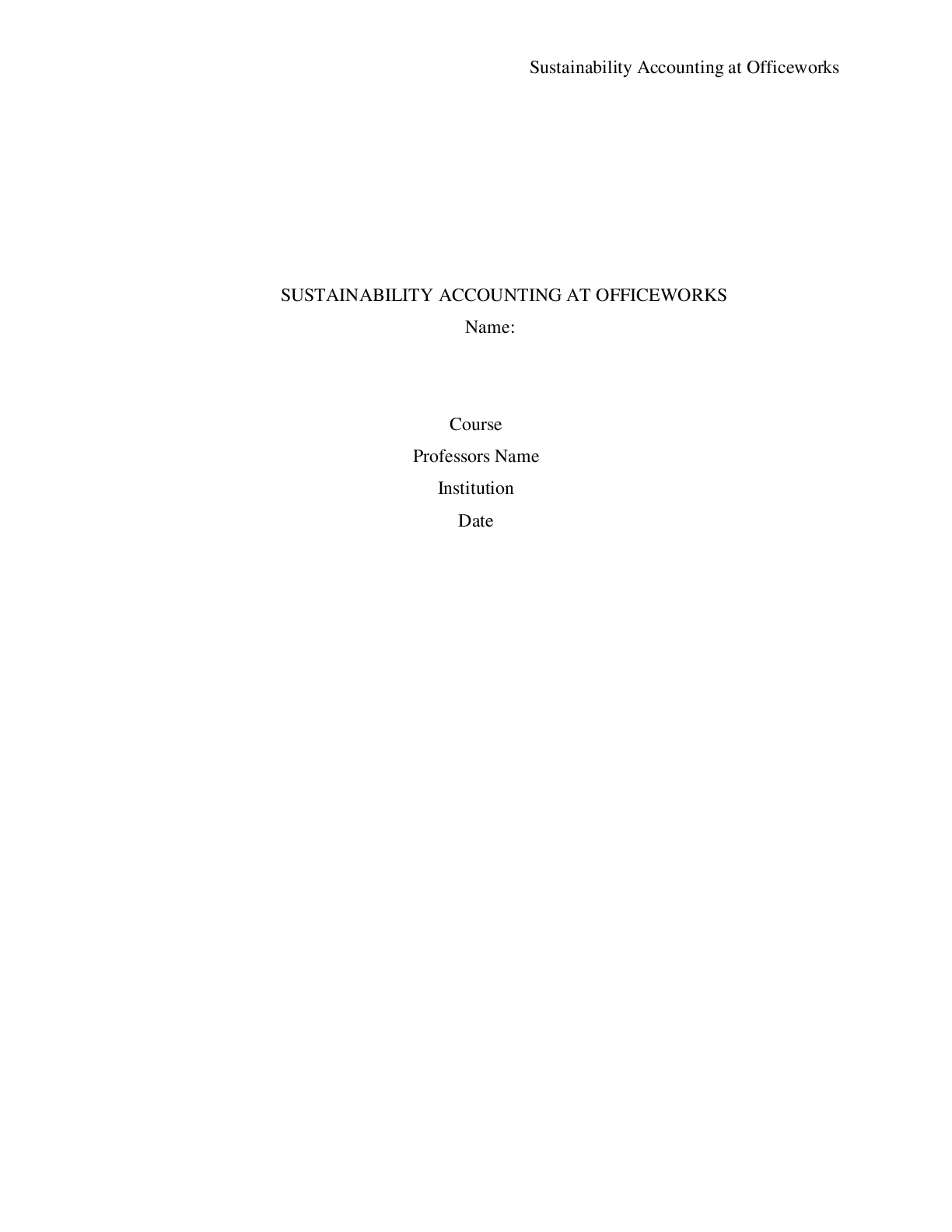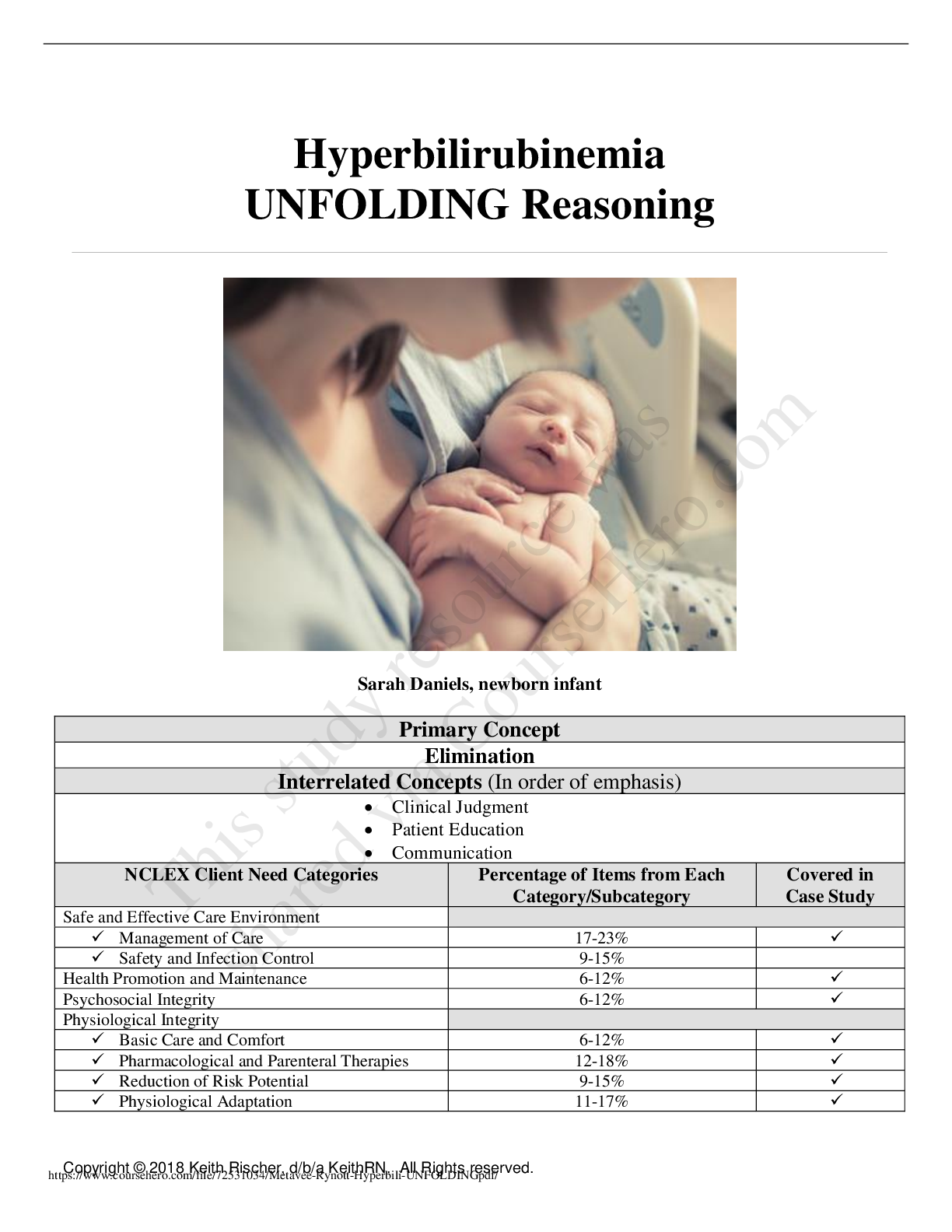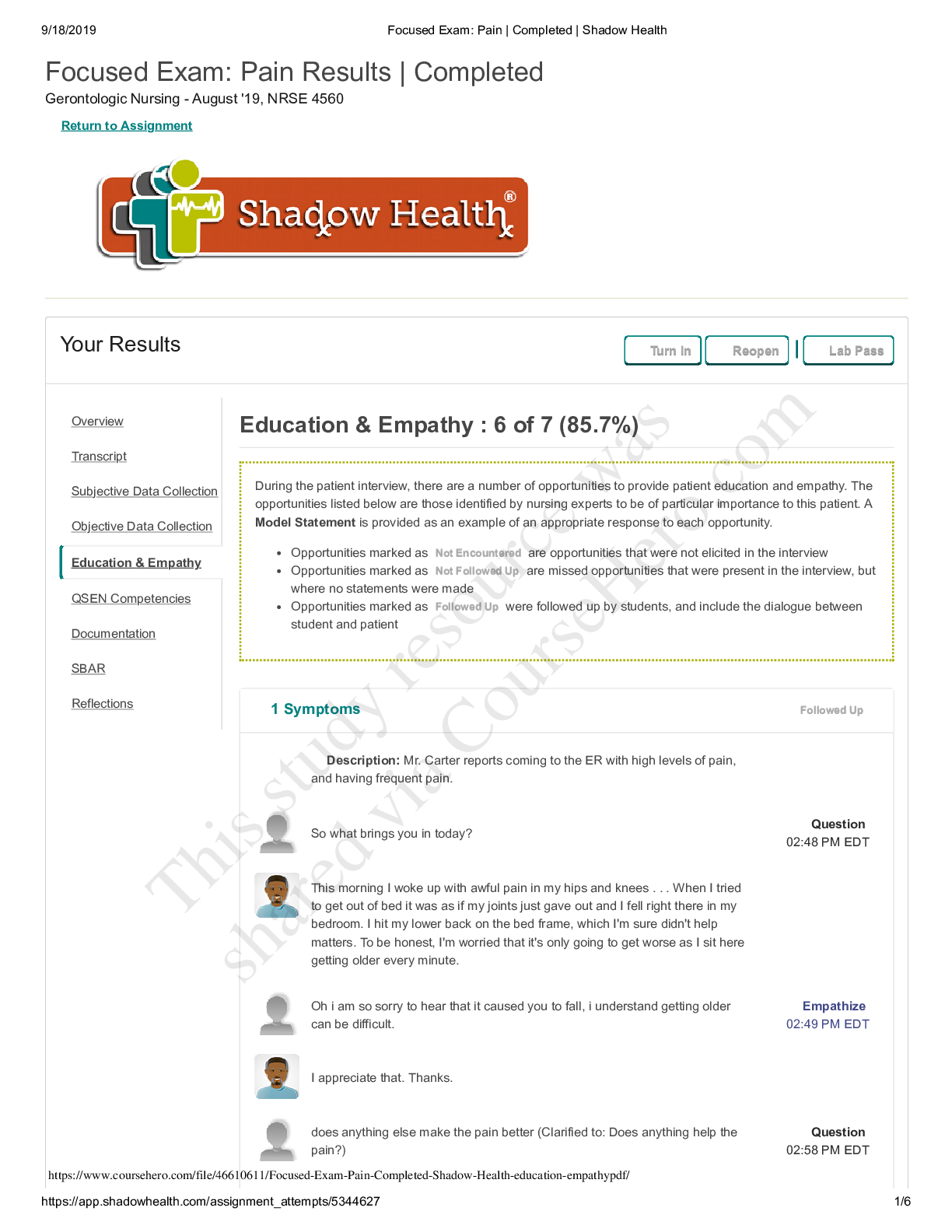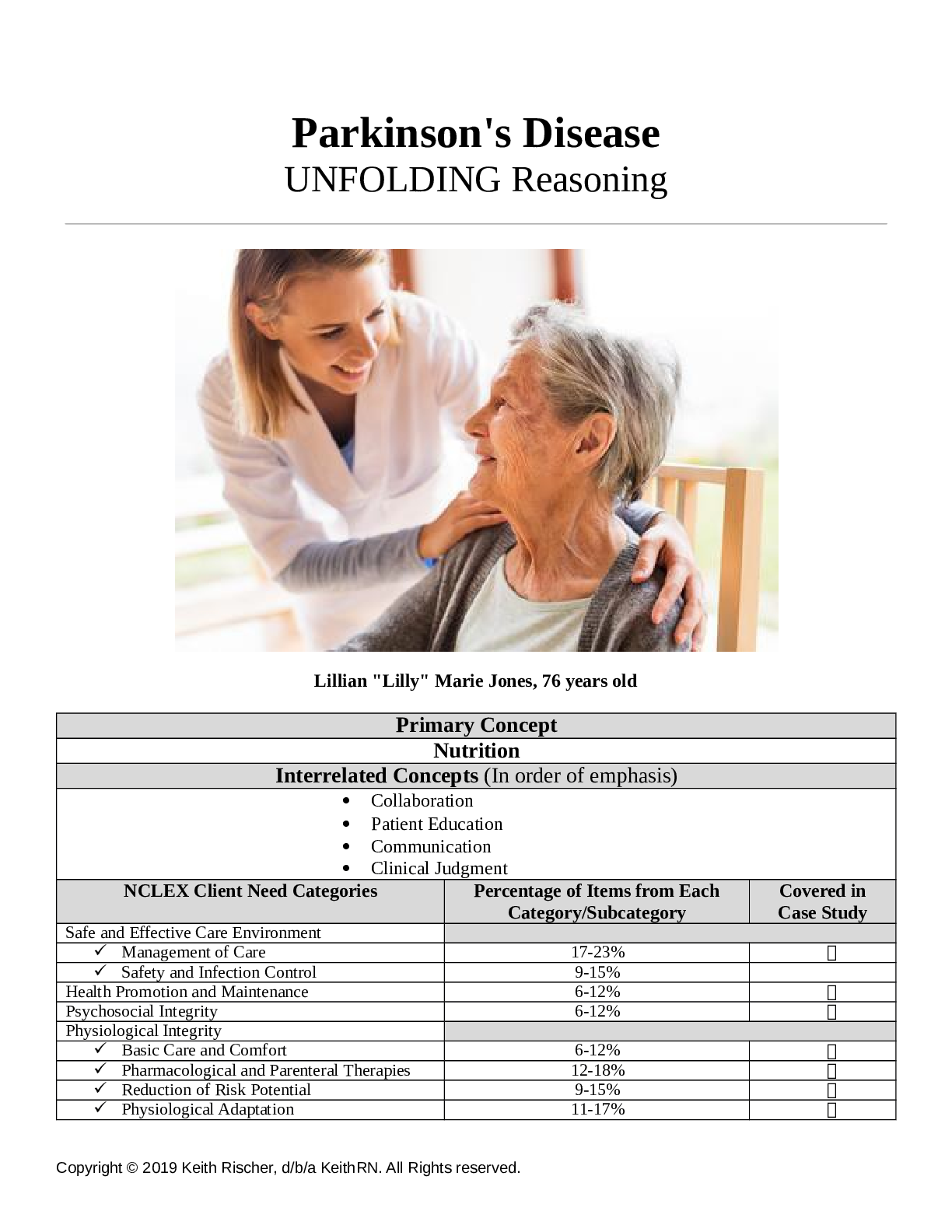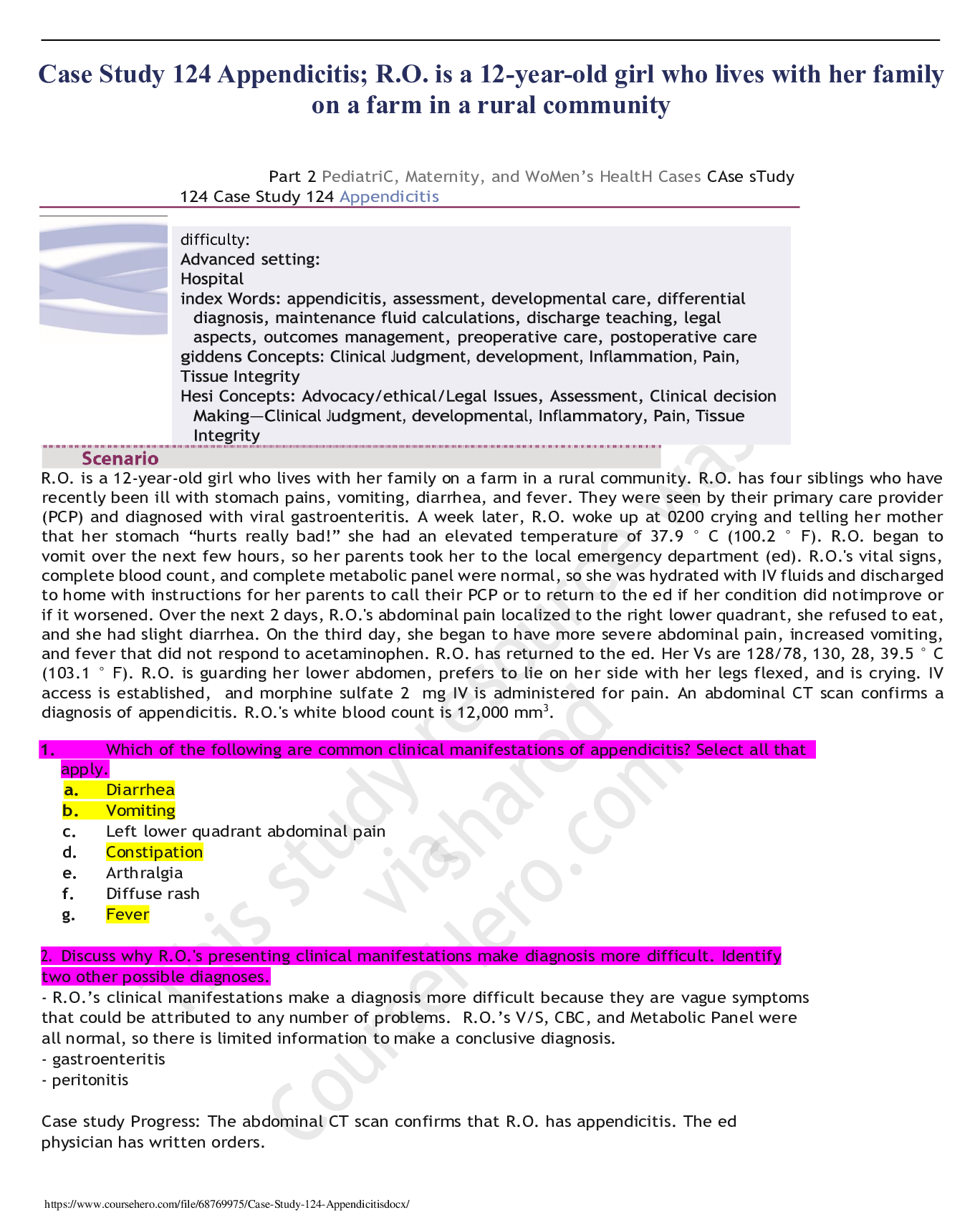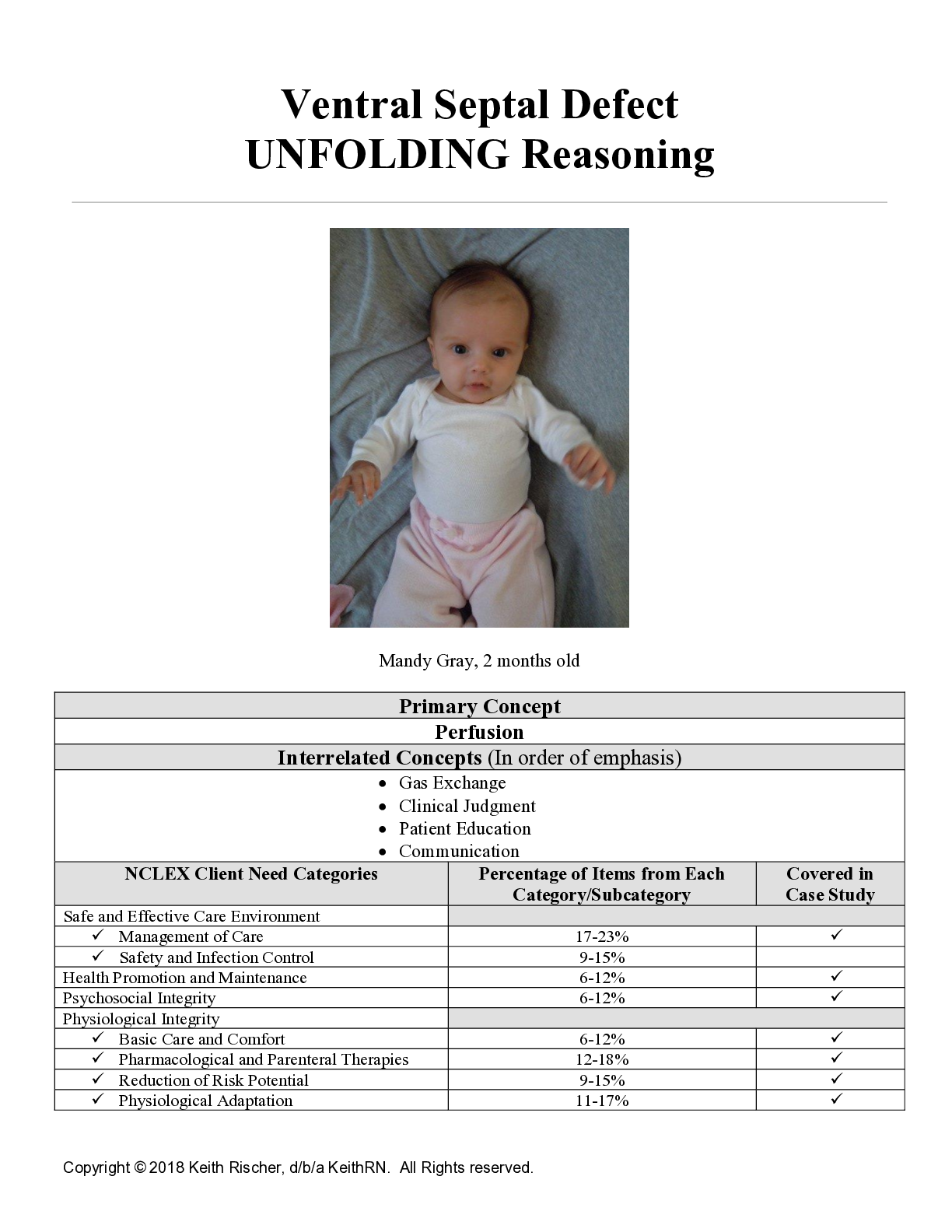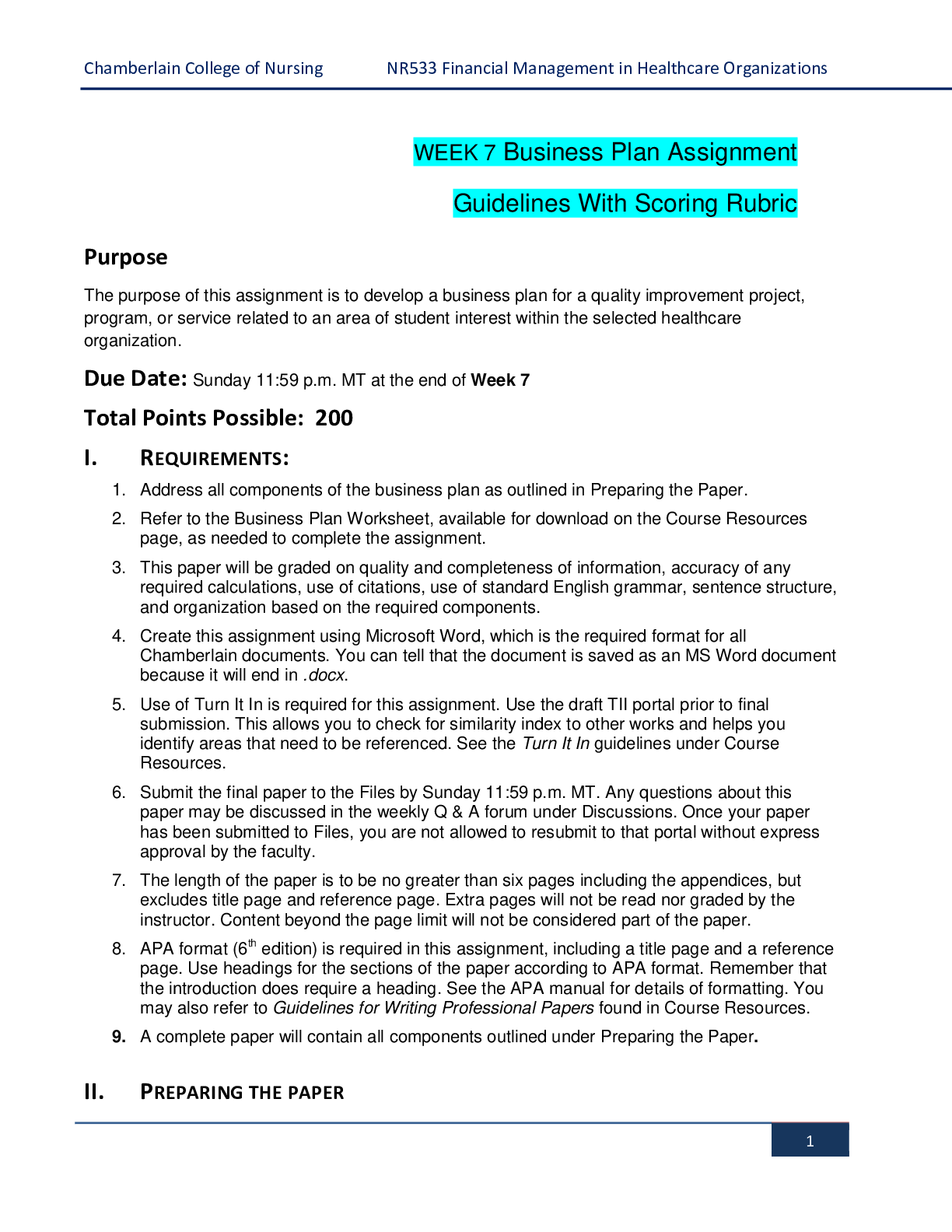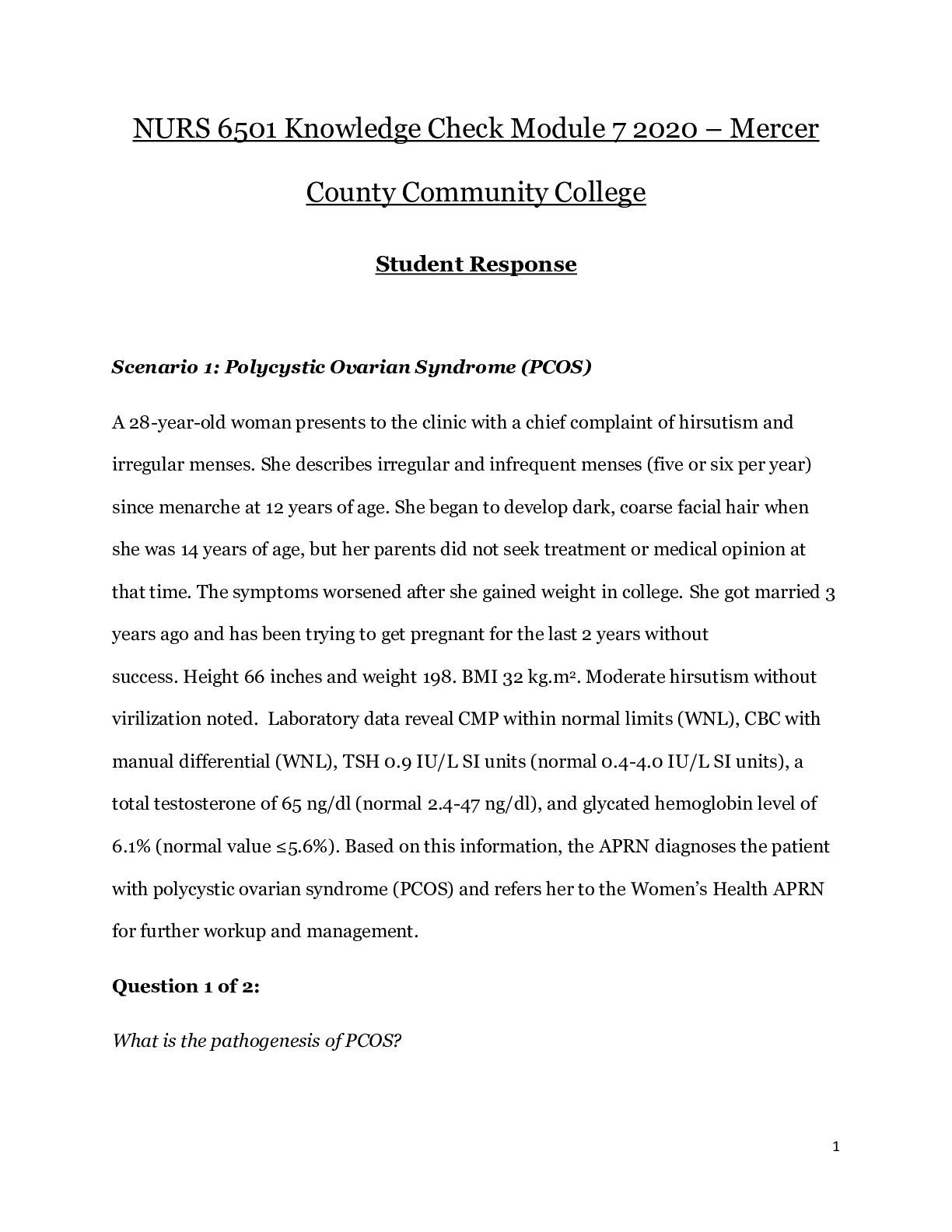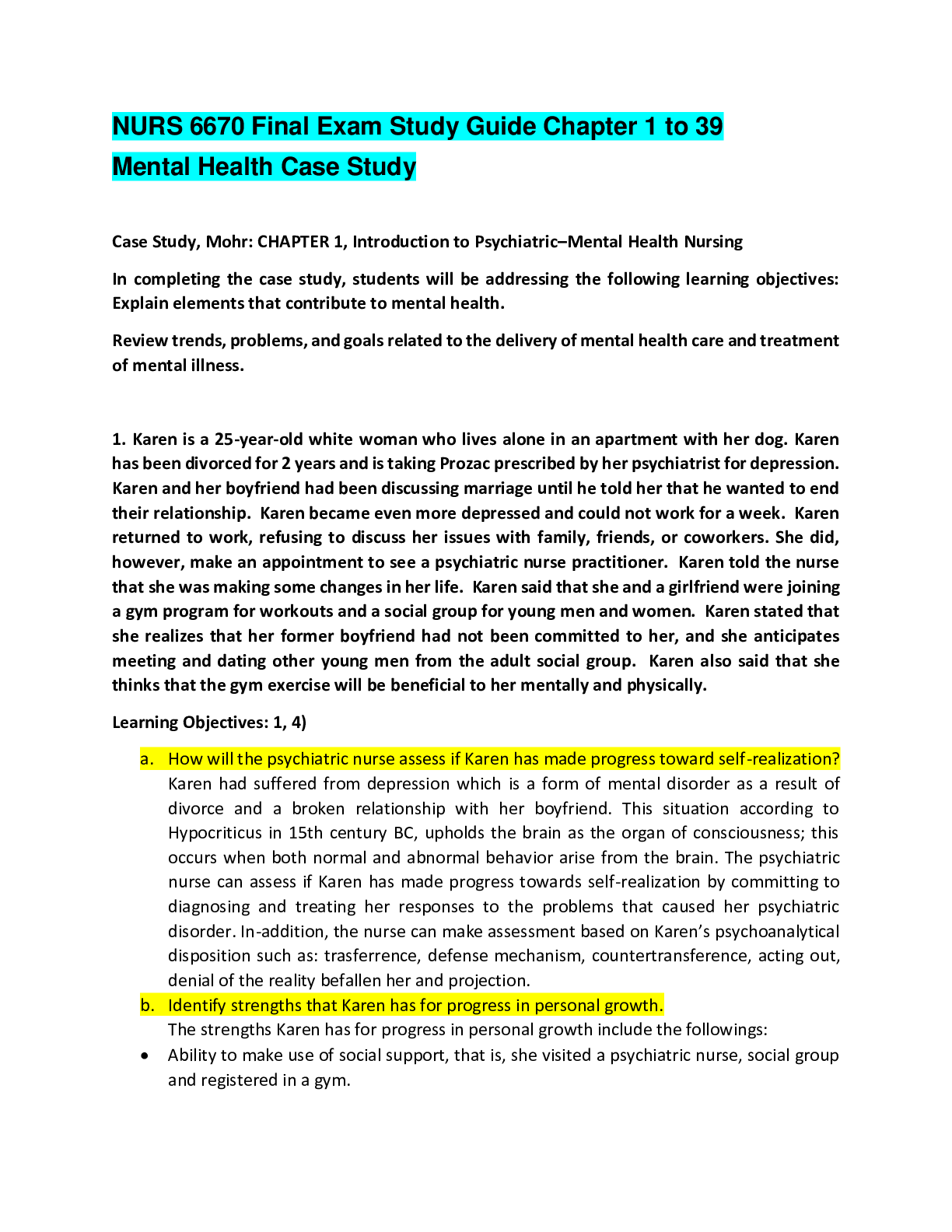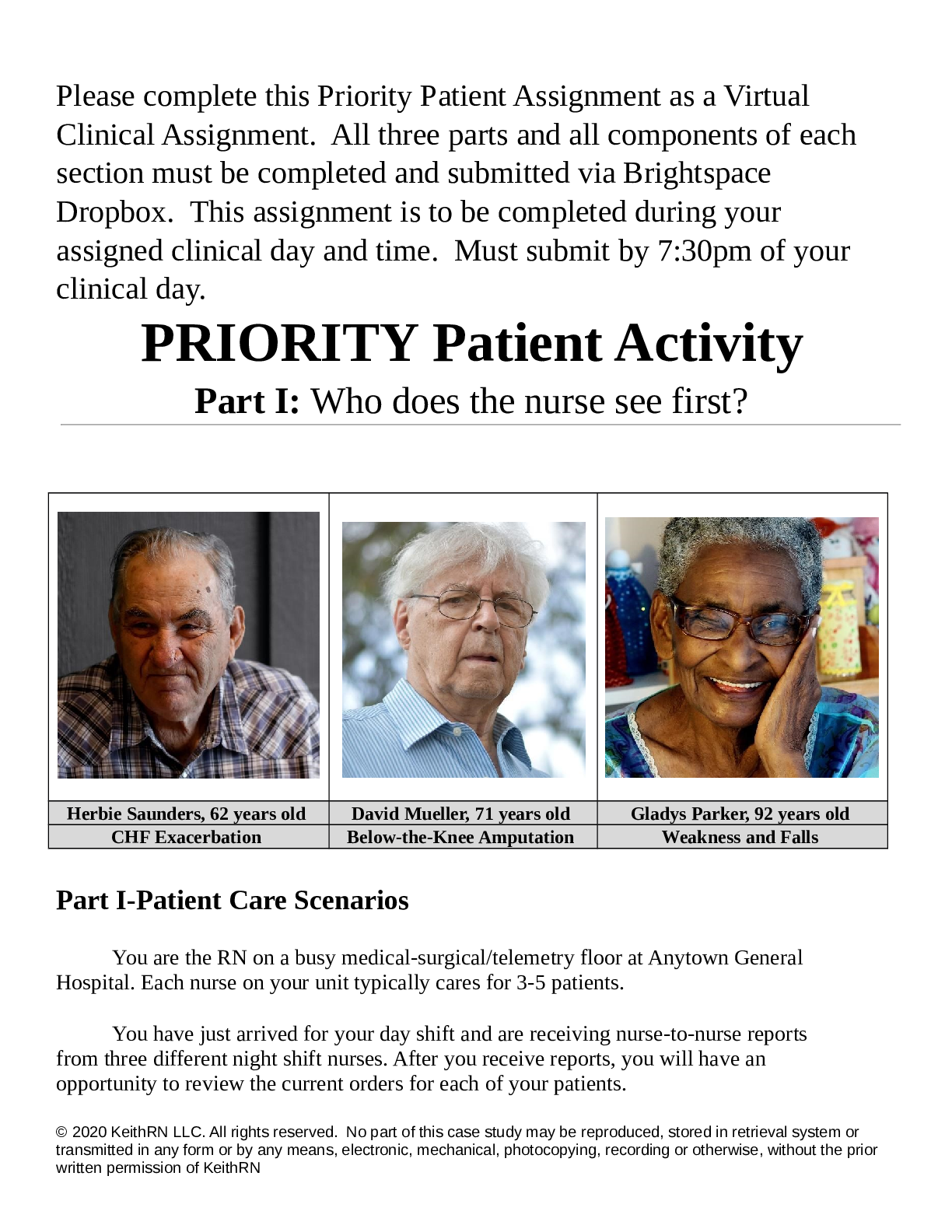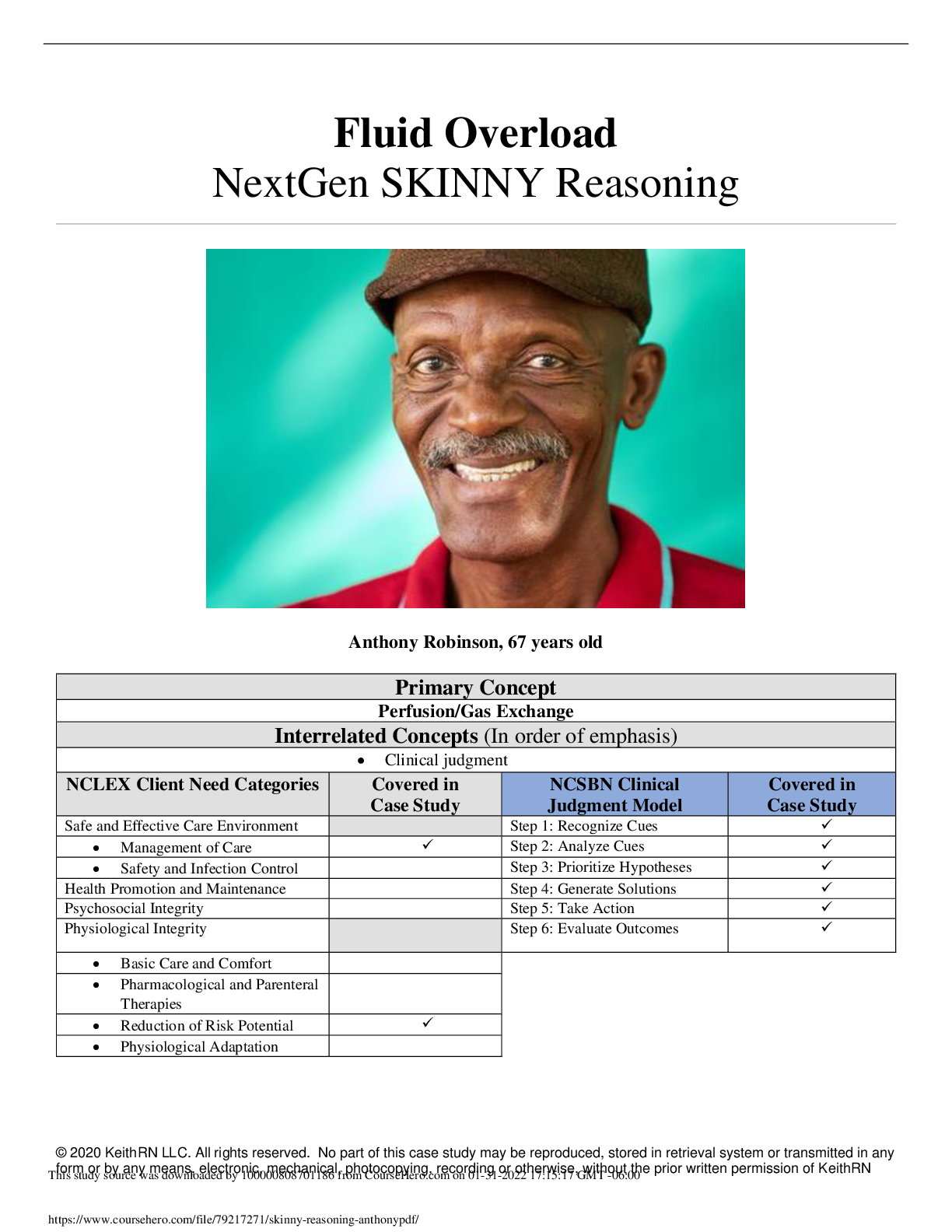*NURSING > CASE STUDY > Advanced Pathophysiology NURS - 6501N-25 (All)
Advanced Pathophysiology NURS - 6501N-25
Document Content and Description Below
Scenario 1: Let's take a look at Jenifer signs and symptoms first: Jennifer has been “running a temperature” for the last 3 days. She started to get fussy, would not eat her breakfast, and woul... d not sit still for her favorite television cartoon. Since then she has had a fever off and on, anywhere between 101 of and today’s high of 103.2oF. After given Ibuprophen, fever went up to 103.2oF. Today, she felt that she should come in for evaluation. . Her skin is hot and dry. The tympanic membranes are slightly reddened on the periphery. The throat is erythematous with 4+ tonsils and diffuse exudates. Anterior cervical nodes are readily palpable and clearly tender to touch on the left side. The child indicates that her throat hurts “a lot” and it is painful to swallow. Vital signs reveal a temperature of 102.8oF, a pulse of 128 beats per minute, and a respiratory rate of 24 beats per minute. The diagnosis is: Sore Throat-Pharyngitis Sore Throat-Pharyngitis Sore throat is a common problem during childhood and is usually the result of a bacterial or viral infection. Although sore throat usually resolves without complications, it sometimes requires treatment with an antibiotic. There are some less common causes of sore throat that are serious or even life-threatening. GENERAL CHARACTERISTICS-Pathophysiology Streptococcus pyogenes is a facultative, gram-positive coccus that grows in chains. It causes an array of infections involving the respiratory tract and soft tissues ranging in severity from mild to severe. The only known reservoirs are the skin and mucous membranes of the human host. The pathogenic mechanisms underlying these infections are poorly understood, largely because each is the culmination of highly complex interactions between the human host defense mechanisms and specific virulence factors of the organism. MICROBIOLOGIC CHARACTERISTICS Group A Streptococcus (GAS) requires complex media containing blood products. It grows best in an environment of 10 percent carbon dioxide and produces pinpoint colonies on blood agar plates; these are surrounded by a zone of complete (beta) hemolysis. .......................................................CONTINUED................................................... [Show More]
Last updated: 1 year ago
Preview 1 out of 19 pages
Instant download
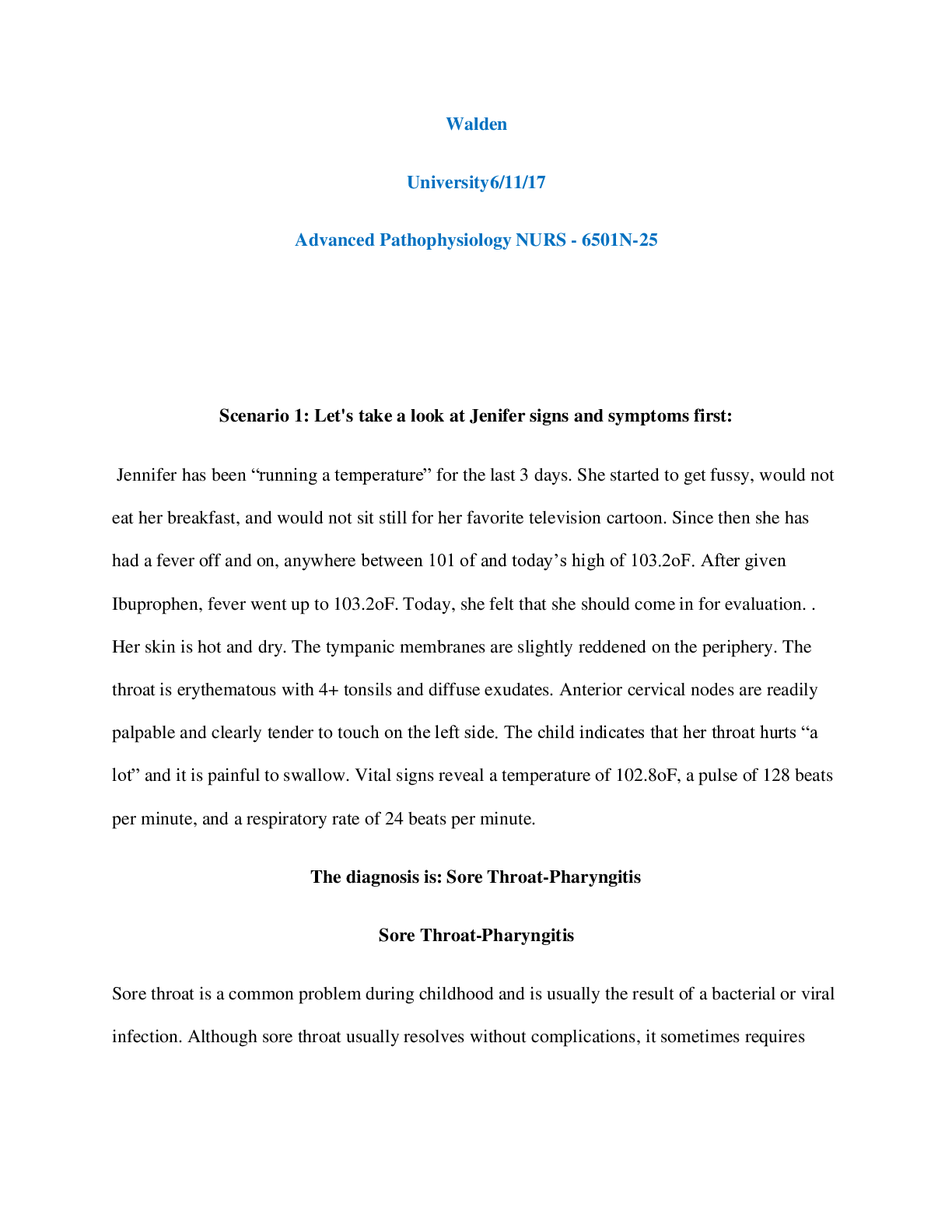
Instant download
Reviews( 0 )
Document information
Connected school, study & course
About the document
Uploaded On
Aug 11, 2021
Number of pages
19
Written in
Additional information
This document has been written for:
Uploaded
Aug 11, 2021
Downloads
0
Views
29

